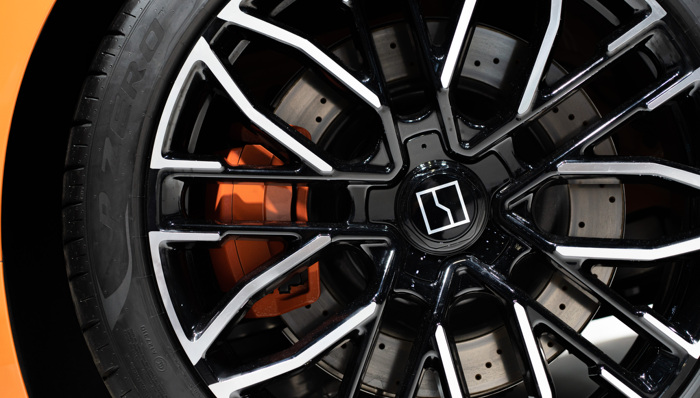Restriction On 0-100 Km/h Acceleration No Less Than 5 Seconds, New Energy Vehicles "Strictest In History" Standard Adds Another Example

In the context of the rapid iteration of new energy technologies, automobiles are transforming from mere transportation tools into technology products, and performance parameters have become one of the core elements of competition among car manufacturers. The acceleration from 0 to 100 kilometers per hour, as an intuitive indicator of a vehicle's power level, not only influences consumers' purchasing decisions but also serves as a key support point for marketing and promotion by car companies.
However, as the industry increasingly pursues performance metrics, relevant regulatory policies have also begun to intervene gradually. In the draft of the "Safety Technical Conditions for Motor Vehicle Operation" organized by the Ministry of Public Security recently, the provision that "the default state acceleration time for passenger cars after starting should be no less than 5 seconds per 100 kilometers" has stirred up waves in the automotive industry.
The reason this regulation has sparked heated discussion is not only because of its constraints on the technological paths of car companies, but also because it touches upon the core logic of performance competition in new energy vehicles. To understand its deeper meaning, it is necessary to trace back the development trajectory of the automotive industry.
In the era of fuel vehicles, the 0 to 100 km/h acceleration time is a core indicator for measuring a vehicle's power level and a significant dividing line for distinguishing vehicle classes. The working principle of traditional internal combustion engines dictates the gradual nature of their power output. To enhance acceleration performance, more precise engine design, more efficient transmission matching, and lighter body materials are required. These technical barriers make high performance an exclusive label for luxury brands.
Taking the Lamborghini Urus and Audi RS6 as examples, both models have a 0-100 km/h acceleration time of around 3.4 seconds. The former has a starting price of nearly 3 million RMB, while the latter starts at over 1.4 million RMB. In terms of performance and pricing, these high-performance models set significant technical and cost barriers, making it difficult for ordinary brands to compete, thereby creating a distinct market segmentation.
However, the electrification wave has completely overturned this pattern. The physical characteristics of electric motors allow them to instantly release peak torque. This "instant peak upon electrification" feature makes acceleration performance, which originally required complex mechanical structures and huge costs to achieve, readily accessible.
The Tesla Model 3 Performance version can achieve a 0-100 km/h acceleration in 3.1 seconds, yet its price is less than a quarter of the Audi RS6; entry-level electric cars like the BYD Dolphin can also easily achieve acceleration within 10 seconds. The widespread availability of high performance provides emerging car manufacturers with an excellent marketing entry point.
From the Zeekr 001 FR version's 2.02-second 0-100 km/h acceleration record to the Xiaomi SU7 Ultra's astonishing performance of just 1.97 seconds, these figures, which were only possible on racetracks during the era of fuel-powered cars, have now become almost effortlessly achievable "performance weapons."
The lowering of the threshold is bound to challenge the market position of traditional brands. Li Yanwei, an expert committee member of the China Automobile Dealers Association, told Jiemian News that traditional automakers have accumulated core technical experience in power systems, chassis tuning, and other areas during the era of fuel vehicles, giving them a significant advantage in vehicle handling stability. The popularity of new energy vehicles, through the instantaneous torque characteristics of electric motors, has broken the high-threshold positioning of traditional performance cars.
Previously, only fuel vehicles priced above 500,000 yuan could achieve 0-100 km/h acceleration in under five seconds. Now, new energy vehicles priced between 200,000 to 300,000 yuan can achieve the same or even better performance. Li Yanwei stated that consumers can obtain acceleration performance comparable to high-end fuel performance cars at a lower cost. While technological iteration has broadened the audience for high-performance models, it also poses higher demands on drivers' technical skills.
A professional engaged in automotive testing told Jiemian News, "If one is not familiar with high-performance vehicles, blindly driving them can easily lead to serious consequences. During vehicle testing, when the steering wheel deviation causes the front wheels to be misaligned with the body, full acceleration may result in skidding, spinning, and other loss of control phenomena."
He further explained that, for safety reasons, the staff responsible for filming at the test site usually use telephoto lenses and other equipment to conduct remote shooting from a safe distance away from the testing area. In everyday driving scenarios, if a vehicle loses control due to operational errors on public roads or in densely populated areas, it will pose serious safety hazards.
Some argue that the excessive internal competition in the performance of new energy vehicles not only brings safety hazards but also distorts the logic of market competition. As acceleration performance approaches physical limits, consumers' real needs are ignored, technical research deviates from practical value, and road safety risks increase exponentially.
The interviewee's car is a high-performance SUV from a certain German luxury brand. He told Jiemian News that traditional luxury brands like Mercedes-Benz and BMW have long provided driving training guided by professional drivers for high-performance car owners. The core objective is to help users master the vehicle's power characteristics and emergency handling capabilities in loss-of-control situations. In contrast, "new forces" are still in the exploratory stage in this field. Although some brands have achieved breakthroughs in performance, the lack of targeted training may exacerbate the risk of driver misjudgment.
In recent years, there have been frequent incidents of uncontrolled acceleration in pure electric vehicles and plug-in hybrid vehicles, mostly due to drivers' insufficient driving preparation and control ability when using high-performance modes. Therefore, the new regulations require that vehicles default to a lower acceleration performance mode upon startup.
On the other hand, the new regulations aim to curb the trend of automobile companies blindly pursuing extreme parameters, guiding enterprises to focus on areas that truly enhance travel quality, such as intelligent safety, range optimization, and user experience, thereby providing institutional guarantees for the healthy and orderly development of the automotive industry. Yu Chengdong, Huawei's Executive Director and Chairman of the Terminal BG, once stated, "Some cars blindly pursue 2-second acceleration, 3-second acceleration, which is meaningless. The most important thing is safety."
The new regulations reflect the regulatory authorities' dual consideration of technological development and safety needs. On one hand, it does not stifle technological innovation but sets a safety baseline for technology applications; on the other hand, it does not deprive consumers of their right to choose but provides safety assurance for everyday use.
Through this balanced design, the regulatory framework not only reserves technological space for high-performance vehicles but also encourages the industry to shift from merely pursuing a parameter race to a more rational development path. It seeks to draw a clear line between pursuing driving experience and controlling potential risks.
For most car manufacturers, achieving the requirement of "acceleration time of no less than 5 seconds per 100 kilometers" can be done through software adjustments without the need to change hardware. Specifically, this can be achieved by modifying parameters such as the output power, torque, and pedal response logic in the default mode.
These applications are already widely present in existing vehicle models. By presetting multiple driving modes, automakers can meet users' pursuit of high performance while ensuring safety and compliance in daily use. For example, many models from brands like NIO, Tesla, Xiaomi, and BYD support free switching between comfort, standard, sport, and track modes.
In today's wave of electrification and intelligence sweeping the globe, the Chinese automotive industry is standing at a new historical starting point. How to maintain innovative vitality while ensuring safety and reliability, and how to meet the diverse needs of consumers while safeguarding public safety, are common issues the entire industry must address. From this perspective, new regulations may be an important step in pushing the industry towards greater maturity and rationality.
From a competitive perspective, the regulations may reshape the competitive logic of the new energy vehicle industry. Once "the default acceleration time of no less than 5 seconds per 100 kilometers" becomes a mandatory standard, industry reshuffling and technological upgrades will be inevitable. Especially in the era of new energy vehicles, the focus of competition among car companies will shift from "faster" to "safer" and "more reliable." This transformation is a necessary path for the industry to move from wild growth to mature and rational development.
The regulation signifies that the management focus of the new energy vehicle market is shifting from solely "encouraging innovation" to "balancing safety and quality." As the industry scale expands, such initiatives to establish new market regulations are becoming increasingly frequent.
Since the beginning of this year, a number of "strictest in history" standards related to new energy vehicles have been intensively implemented, including safety requirements for car door handles and power batteries. These standards not only fill the regulatory gaps in key safety areas previously existing in the industry but also establish a clear technical baseline for the safety performance of new energy vehicles through the establishment of mandatory technical specifications.
【Copyright and Disclaimer】The above information is collected and organized by PlastMatch. The copyright belongs to the original author. This article is reprinted for the purpose of providing more information, and it does not imply that PlastMatch endorses the views expressed in the article or guarantees its accuracy. If there are any errors in the source attribution or if your legitimate rights have been infringed, please contact us, and we will promptly correct or remove the content. If other media, websites, or individuals use the aforementioned content, they must clearly indicate the original source and origin of the work and assume legal responsibility on their own.
Most Popular
-

BASF Signs Another Giant: Covestro Already Set Up, Just Missing Wanhua Chemical?
-

Clariant Plans to Shut Down Multiple Plants! Wingtech Releases Latest Statement! Oriental Yuhong Acquires Stake in Brazilian Company
-

Clariant Unveils Cost-Cutting Plan Details, Plans to Shut Down Multiple Plants
-

ExxonMobil Plans to Close UK Ethylene Plant; GPI's Revenue & Profit Both Decline! Haitian's Serbia Base Enters Mass Production
-

Ineos Styrolution Closes French Plant! UK Lincolnshire Plans £35 Million Waste Plastic Recycling Facility






